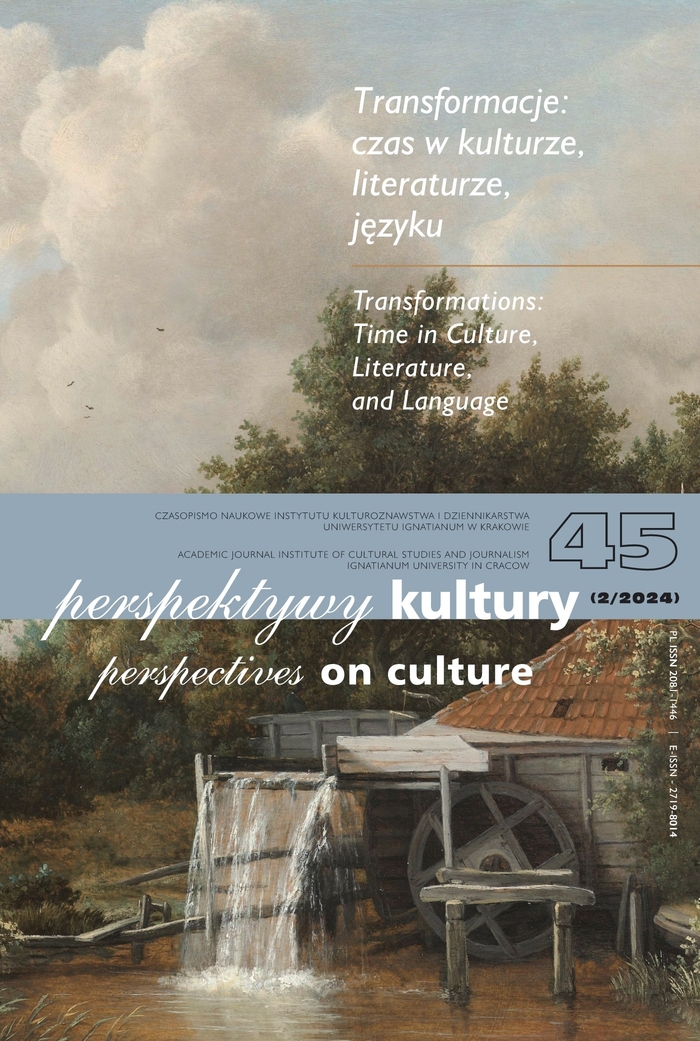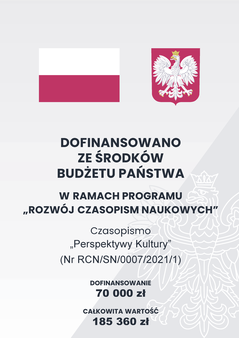Znaczenie komunikacji z interesariuszami w projektach o charakterze konserwatorskim: studium przypadku ołtarza Wita Stwosza w bazylice Mariackiej w Krakowie
Abstrakt
Celem artykułu jest analiza przebiegu komunikacji z interesariuszami podczas trwania jednego z najważniejszych projektów dziedzictwa kulturowego w Europie: „Kompleksowe prace badawcze i konserwatorskie ołtarza Wita Stwosza, 1489” realizowanego w bazylice Mariackiej w Krakowie. Znajdujący się w historycznym centrum Krakowa kościół, obchodzący w latach 2022– 2026 jubileusz 800-lecia powstania parafii, został wpisany na pierwszą listę światowego dziedzictwa kulturowego i przyrodniczego UNESCO w 1978 r. Opisywany projekt był realizowany od października 2015 do lutego 2021, choć rozpoczęto go w latach 2011–2012 wraz z powołaniem komisji do oceny stanu ołtarza oraz jego pełną inwentaryzacją w 2013 r. za pomocą skaningu laserowego 3D. Pomimo przerwy spowodowanej pandemią COVID-19 w działaniach konserwatorskich od marca do czerwca 2020 r. projekt został zrealizowany terminowo i zgodnie z założonym zakresem. Badania wykazały, że jednym z głównych czynników sukcesu była odpowiednio zaprojektowana i wdrożona komunikacja, odpowiadająca potrzebom informacyjnym wszystkich najważniejszych interesariuszy przedmiotowego projektu. Ponadto, sukces wynikał także z właściwego zaangażowania i podziału odpowiedzialności interesariuszy wewnętrznych w procesy komunikacji z kluczowymi interesariuszami zewnętrznymi.
Bibliografia
Adamowicz, J. (2021). Ołtarz Wita Stwosza. Efekt zakończonych prac badawczych i konserwatorskich prowadzonych w latach 2015-2021 [The Wit Stwosz altar. The effects of completed research and conservation works carried out in 2015-2021]. Rocznik Krakowski, 87. [link: http://rk.tmhzk.krakow.pl/index.php?inf=dane/tomy_rocznika.php&sub=2]
Adler, P. S. (1995). Interdepartmental interdependence and coordination: The case of the design/manufacturing interface. Organization Science, 6(2), 147-167.
Alsulaimi, A., and Abdullah, T. (2020). Management of Stakeholder Communications in IT Projects. 3rd International Conference on Computer Applications & Information Security (ICCAIS).
Assudani, R. and Kloppenborg, T. J. (2010). Managing Stakeholders for Project Management Success: An Emergent Model of Stakeholders. Journal of General Management, 35 (3), 67-80. DOI: 10.1177/030630701003500305.
Bonacini, E., Tanasi, D. and Trapani, P. (2018) Participatory Storytelling, 3D Digital Imaging and Museum Studies: A case study from Sicily. 3rd Digital Heritage International Congress (DigitalHERITAGE) held jointly with 24th International Conference on Virtual Systems & Multimedia (VSMM 2018). [
Bonora, A. and Fabbri, K. (2021). Two new indices for preventive conservation of the cultural heritage: Predicted risk of damage and heritage microclimate risk. Journal of Cultural Heritage, 47, 208-217. DOI: 10.1016/j.culher.2020.09.006.
Brown, K. M., Huettner, B. and James- Tanny, C. (2007). Managing virtual teams: Getting the most from wikis, blogs, and other collaborative tools. Plano, TX: Wordware.
Butt, A., Naaranoja, M. and Savolainen, J. (2016). Project change stakeholder communication. International Journal of Project Management, 34 (8), 1579-1595. DOI: 10.1016/j.ijproman.2016.08.010.
Clayton, M. (2014). The Influence Agenda. A Systematic Approach to Aligning Stakeholders for Driving Change. Palgrave Macmillan: New York.
Davis, K. (2016). A method to measure success dimensions relating to individual stakeholder groups. International Journal of Project Management, 34 (3), 480-493. DOI: 10.1016/j.ijproman.2015.12.009.
Dieck, M. C. tom and Jung, T. H. (2017). Value of augmented reality at cultural heritage sites: A stakeholder approach. Journal of Destination Marketing & Management, 6(2), 110-117. DOI: 10.1016/j.jdmm.2017.03.002.
Edwards, P. J., Bowen, P. A., Hardcastle, C. and Stewart, P. (2009). Identifying and Communicating Project Stakeholder Risks. Construction Research Congress 2009.
Faraj, S., Jarvenpaa, S.L. and Majchrzak, A. (2011). Knowledge collaboration in online communities. Organisation Science, 22(5), 1124-1239. DOI: 10.2307/41303115.
Ghamouh, N. and Boulahlib, M. (2015). Cultural heritage digitization projects in Algeria. IFLA Journal, 41(3), 272-278. DOI: 10.1177/0340035215603994.
Guðlaugsson, B., Fazeli, R., Gunnarsdóttir, I., Davidsdottir, B., Stefansson, G. (2020). Classification of stakeholders of sustainable energy development in Iceland: Utilizing a power-interest matrix and fuzzy logic theory. Energy for Sustainable Development, 57, 168-188. DOI: 10.1016/j.esd.2020.06.006.
Guerriero, L., Napoli, M.D., Novellino, A., Martire, D. D., Rispoli, C., Lee, K., Bee, E., Harrison, A. and Calcaterra, D. (2022). Journal of Cultural Heritage, 55, 339-345. DOI: 10.1016/j.culher.2022.04.009.
Hirsenberger, H., Ranogajec, J., Vucetic, S. Lalic, B., and Gracanin, D. (2019). Collaborative projects in cultural heritage conservation – management challenges and risks. Journal of Cultural Heritage, 37, 215-224. DOI: 10.1016/j.culher.2018.10.006.
Hudson, S., and Hudson, R. (2013). Engaging with consumers using social media: A case study of music festivals. International Journal of Event and Festival Management, 4(3), 206-223. DOI: 10.1108/IJEFM-06-2013-0012.
IPMA International Project Management Association (2009). Polskie Wytyczne Kompetencji Indywidualnych NCB 3.0. [Polish Individual Competence Baseline NCB 3.0].
IPMA International Project Management Association (2015). Polskie Wytyczne Kompetencji Indywidualnych ICB 4.0. [Polish Individual Competence Baseline ICB 4.0].
Jin, P. and Liu, Y. (2022). Fluid Space: Digitisation of Cultural Heritage and its Media Dissemination. SSRN Electronic Journal. DOI: 10.2139/ssrn.4198122.
Ketokivi, M. and Choi, T. (2014). Renaissance of case research as a scientific method. Journal of Operations Management, 32 (5), 232-240.
Koehler, I. and Raithel, S. (2018). Internal, external, and media stakeholders’ evaluations during transgressions. Corporate Communications: An International Journal. doi:10.1108/ccij-10-2017-0096 10.1108/ccij-10-2017-0096.
Lehtinen, J. and Aaltonen, K. (2020). Organizing external stakeholder engagement in inter-organizational projects: Opening the black box. International Journal of Project Management, 38, 85-98. DOI: 10.1016/j.ijproman.2019.12.001.
Marto, A., Gonçalves, A., Melo, M. and Bessa, M. (2022). A survey of multisensory VR and AR applications for cultural heritage. Computers & Graphics, 102, 426-440. DOI: 10.1016/j.cag.2021.10.001.
Mayfield, P. (2014). Engaging with stakeholders is critical when leading change. Industrial and Commercial Training, 46(2), 68-72. DOI: 10.1108/ICT-10-2013-0064.
Mazur A.K. and Pisarski. A. (2015) Major project managers’ internal and external stakeholder relationships: The development and validation of measurement scales. International Journal of Project Management, 33 (8), 1680-1691. DOI: 10.1016/j.ijproman.2015.07.008.
McElroy, B. and Mills, Ch. (2014) Managing stakeholders. in R. Turner (Eds.), Gower handbook of project management. Routledge.
McGrath, S. K. and Whitty, S. J. (2017). Stakeholder defined. International Journal of Managing Projects in Business, 10 (4), 721-748.
Molwus, J. J., Erdogan, B. and Ogunlana, S. (2017). Using structural equation modelling (SEM) to understand the relationships among critical success factors (CSFs) for stakeholder management in construction. Engineering, Construction and Architectural Management, 24 (3), 426-450. DOI: 10.1108/ecam-10-2015-0161.
Moreno, M., Ortiz, R., Cagigas-Muñiz, D., Becerra, J., Martin, J.M., Prieto, A.J., Garrido-Vizuete, M.A., Macías-Bernal, J.M., Chávez, M.J. and Ortiz, P. (2022). ART-RISK 3.0 a fuzzy-based platform that combine GIS and expert assessments for conservation strategies in cultural heritage. Journal of Cultural Heritage, 55, 263-276. DOI: 10.1016/j.culher.2022.03.012.
Munjeri, D. (2004). Tangible and Intangible Heritage: from difference to convergence. Museum International, 56(1–2), 13-20. DOI: doi.org/10.1111/j.1350-0775.2004.00453.x.
Nguyen, T.H.D., Chileshe, N., Rameezdeen, R. and Wood, A. (2019). Stakeholder influence strategies in construction projects. International Journal of Managing Projects in Business, 13 (1), 47-65. DOI: 10.1108/ijmpb-05-2018-0093.
Nicolas, S., Paquet, T. and Heutte, L. (2003). Digitizing cultural heritage manuscripts: the Bovary project. Proceedings of the 2003 ACM symposium on Document engineering - DocEng '03.
Olander, S. and Landin, A. (2005) Stakeholder engagement, discourse ethics and strategic management. International Journal of Management Reviews, 12, 39-49. DOI: 10.1111/j.1468-2370.2009.00279.x.
Oliveira, G. F. de and Rabechini, R. Jr (2019). Stakeholder management influence on trust in a project: A quantitative study. International Journal of Project Management, 37 (1), 131-144. DOI: 10.1016/j.ijproman.2018.11.001.
Paolis, L. T. De, Chiarello, S., Gatto, C., Liaci, S. and Luca, V. De (2022). Virtual reality for the enhancement of cultural tangible and intangible heritage: The case study of the Castle of Corsano. Digital Applications in Archaeology and Cultural Heritage, 27. DOI: 10.1016/j.daach.2022.e00238.
Pencakowski, P. (2021). Co „czas ochronił, a wieki i zdarzenia gwałtowne oszczędziły”. Refleksje nad dziejami Ołtarza Mariackiego [What "time has protected, and centuries and violent events have spared." Reflections on the history of St. Mary's Church Altar]. Rocznik Krakowski, 87, 39-65. [link: http://rk.tmhzk.krakow.pl/index.php?inf=dane/tomy_rocznika.php&sub=2]
PMI Project Management Institute (2021) A Guide to the Project Management Body of Knowledge PMBoK 7th Edition.
Santosuosso, P. (2022). A satisfaction-based model for risk indexing in cultural heritage conservation. Journal of Cultural Heritage, 57, 173-183. DOI: 10.1016/j.culher.2022.08.007.
Savage, G.T., Nix, T.W., Whitehead C. J. and Blair, J. D. (1991). Strategies for assessing and managing organizational stakeholders. Academy of Management Perspectives, 5 (2), 61-75. DOI: 10.5465/ame.1991.4274682.
Silva, H. E. and Henriques, F. M. A. (2021). The impact of tourism on the conservation and IAQ of cultural heritage: The case of the Monastery of Jerónimos (Portugal). Building and Environment, 190. DOI: 10.1016/j.buildenv.2020.107536.
Takagi, N. and Varajão, J. (2019). Integration of success management into project management guides and methodologies - position paper. Procedia Computer Science, 164, 366-372. DOI: 10.1016/j.procs.2019.12.195.
Turkulainen, V., Aaltonen, K. and Lohikoski, P. (2015). Managing Project Stakeholder Communication: The Qstock Festival Case. Project Management Journal, 46 (6), 74-91. DOI: 10.1002/pmj.21547.
UNESCO (1972). Convention concerning the protection of the world cultural and natural heritage. Adopted by the General Conference at its seventeenth session, Paris, 16 November 1972.
UNESCO (2003). Convention of the Safeguarding of the Intangible Cultural Heritage. Adopted by the General Conference at its seventeenth session, Paris, 17 October 2003.
Van de Ven, A., Delbecq A.L., Koenig R. Jr (1976). Determinants of Coordination Modes Within Organizations. American Sociological Review, 41(2), 322-338. DOI: 10.2307/2094477.
Vogler, D., Schranz, M. and Eisenegger, M. (2016). Stakeholder group influence on media reputation in crisis periods. Corporate Communications: An International Journal, 21(3), 322-332. DOI: doi: 10.1108/ccij-01-2016-0003.
Walczy, Ł. (2012). Dzieje konserwacji ołtarza Wita Stwosza w kościele Mariackim w Krakowie [The history of the conservation of the Wit Stwosz altar in St. Mary's Church in Krakow]. Kraków: Towarzystwo Miłośników Historii i Zabytków Krakowa.
Waters, R.D., Burnett, E., Lamm, A. and Lucas, J. (2009). Engaging stakeholders through social networking: How nonprofit organisations are using Facebook. Public Relations Review, 35(09), 102-106. DOI: 10.1016/j.pubrev.2009.01.006.
Welch, M. and Jackson, P. R. (2007). Rethinking internal communication: a stakeholder approach. Corporate Communications: An International Journal, 12 (2), 177-198. DOI: 10.1108/13563280710744847.
Winch, G. M. (2004). Managing project stakeholders. In P. W. G. Morris, and J. K. Pinto (Eds.), The Wiley guide to managing projects, 321-339. DOI: 10.1002/ 9780470172391.ch14.
Yastikli, N. (2007). Documentation of cultural heritage using digital photogrammetry and laser scanning. Journal of Cultural Heritage, 8 (4), 423-427. DOI: 10.1016/j.culher.2007.06.003.
Zwikael, O. Salmona, M., Meredith, J. and Zarghami, S.A. (2022). Enhancing project stakeholder communication under insufficient knowledge of project management concepts. Engineering, Construction and Architectural Management, DOI: 10.1108/ecam-02-2022-0154.
Copyright (c) 2024 Perspektywy Kultury

Utwór dostępny jest na licencji Creative Commons Uznanie autorstwa 4.0 Międzynarodowe.
Autor, zgłaszając swój artykuł, wyraża zgodę na korzystanie przez Wydawnictwo Uniwersystet Ignatianum z utworu na następujących polach eksploatacji:
- utrwalania utworu w formie papierowej, a także na nośniku cyfrowym lub magnetycznym;
- zwielokrotnienia utworu dowolną techniką, bez ograniczenia ilości wydań i liczby egzemplarzy;
- rozpowszechniania utworu i jego zwielokrotnionych egzemplarzy na jakimkolwiek nośniku, w tym wprowadzenia do obrotu, sprzedaży, użyczenia, najmu;
- wprowadzenia utworu do pamięci komputera;
- rozpowszechniania utworu w sieciach informatycznych, w tym w sieci Internet;
- publicznego wykonania, wystawienia, wyświetlenia, odtworzenia oraz nadawania i reemitowania, a także publicznego udostępniania utworu w taki sposób, aby każdy mógł mieć do niego dostęp w miejscu i czasie przez siebie wybranym.
Wydawca zobowiązuje się szanować osobiste prawa autorskie do utworu.






